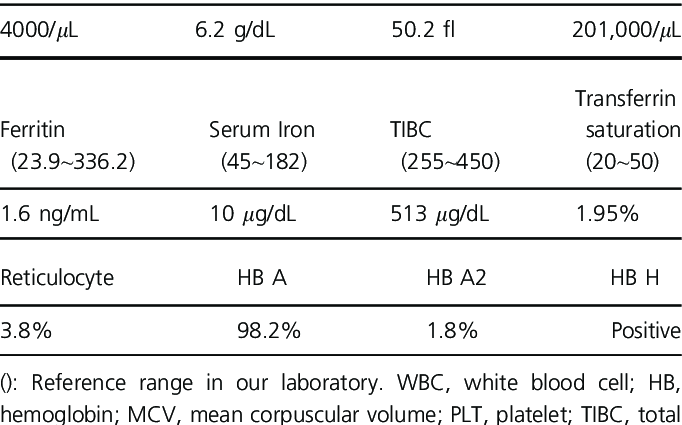Contents
Analysis of iron in the blood
Definition of iron in the blood
Le fer is an essential constituent ofhemoglobin, protein present in Red cells and whose main function is to transport theoxygen in theorganisme.
It is also essential for other body functions, such as DNA synthesis or certain enzymatic reactions.
About 70% of the body’s iron is bound tohemoglobin, while the rest is fixed at transport proteins (The ferritine or transferrin) or stored in certain tissues of the body. For example, in the bone marrow, iron is stored and it is used as needed to make new red blood cells.
The iron comes fromfood (liver and other meats, eggs, fish, or even green vegetables). It is particularly necessary during growth, pregnancy, breastfeeding or after heavy bleeding.
Why do an iron level analysis?
The assay allows you to assess the level of iron in the body and how it is metabolized (ie assimilated by the body). This allows the doctor to diagnose for example iron deficiency (iron deficiency), iron deficiency anemia (anemia due to iron deficiency), hemochromatosis (excess iron in the body), but also to check the nutritional status of the patient.
Warning: the determination of ferritin is often carried out first, the dosage of iron alone is rarely indicated (it can be done with the dosage of transferrin in second intention).
The process of iron analysis
The gold standard for estimating the amount of iron in the body isbone marrow exam, from bone marrow aspiration or biopsy. It is an invasive and traumatic examination which is therefore not performed routinely.
The determination of serum iron (in the blood) can be carried out by a venous blood sample, usually taken at the fold of the elbow. It is rarely done alone because it has little diagnostic value. Most often, it is combined with other assays such as that of serum transferrin, and sometimes that of serum ferritin, soluble transferrin receptors or intraerythrocytic ferritin.
As the iron level is higher in the morning, the examination should preferably take place at this time of the day.
What results can we expect from an iron analysis?
The iron level in the blood is normally between 70 and 175 μg / dl (micrograms per deciliter) in men and between 50 and 150 μg / dl in women, but it varies greatly in the same person during the day ( amplitude of 30 to 40%). This is why it is important to associate the dosage of the transferrin and calculating the transferrin saturation coefficient.
High serum iron levels may be a sign of, among other things:
- a hemochromatosis (iron overload)
- hemolytic anemia (premature destruction of red blood cells in the blood)
- hepatic necrosis
- hepatitis (inflammation of the liver)
- cirrhosis
- chronic alcoholism
- repeated blood transfusions
On the contrary, a low level of iron can be linked to:
- significant blood loss, especially during heavy periods
- pregnancy
- iron deficiency (iron deficiency) linked to food
- a deficiency related to an inability to properly absorb iron
- bleeding in the intestinal tract (ulcers, colon cancer, hemorrhoids)
but also inflammation, infection, after surgery, etc.
Once again, it should be noted that this dosage, carried out in isolation, has no medical interest.
Read also : All about the different forms of hepatitis Our fact sheet on cirrhosis |










